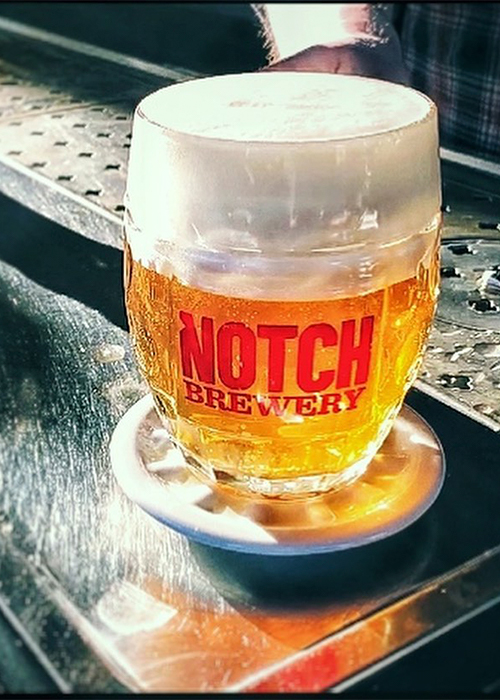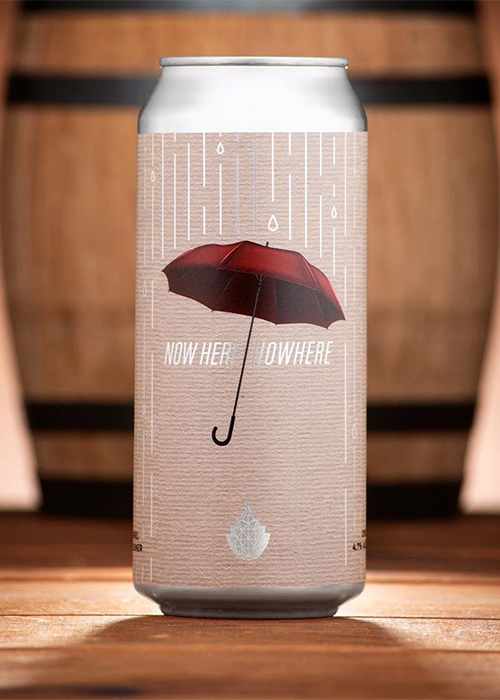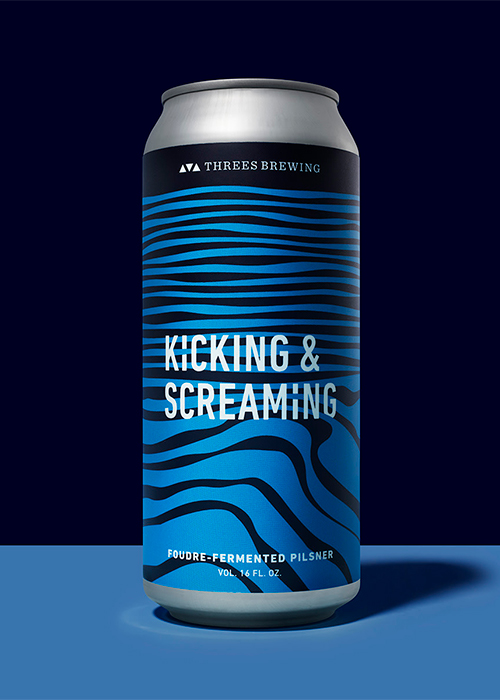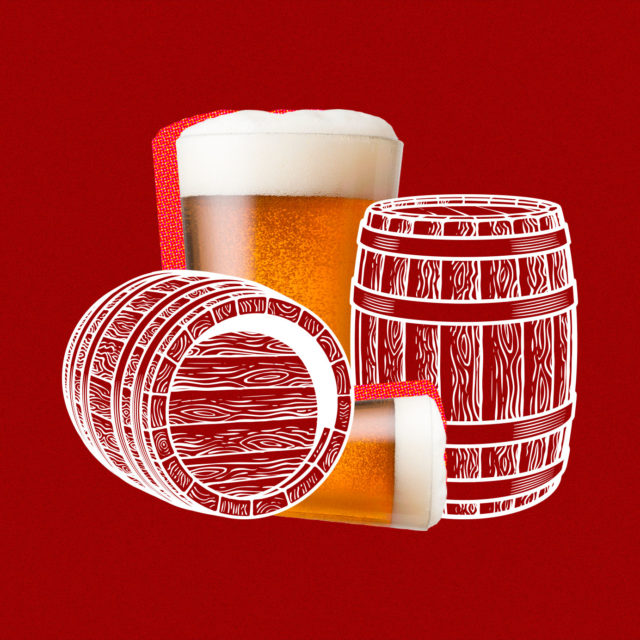Today’s lager breweries are often places of stainless steel, tight environmental controls, and automated brewing systems. But at Pilsner Urquell in the Czech Republic, it’s still possible to taste a pale lager that’s been made the same way for 178 years: Open fermented, conditioned in oak barrels, and served without filtering. The iconic Plzeň brewery refers to the practice as “parallel brewing,” as it’s made alongside the huge production runs of Pilsner that see wide distribution. The practice represents a tiny fraction of the company’s total output — a fraction with the appealing air of nostalgia.
Inspired by this Old World original, a growing number American brewers are rolling back the clock to age their bottom- fermenting creations in wood vessels, too. On the West Coast, California brewer Nile Zacherle put his first lager in barrels soon after launching Mad Fritz in the Napa Valley in 2014. In New York, Threes Brewing was early to experiment with the practice. And in just the last few years, examples have popped up in Oregon (Fort George Brewery), Illinois (Hopewell Brewing Co.), Vermont (Hill Farmstead), Colorado (Cerebral Brewing), South Carolina (Westbrook Brewing Co.), Oklahoma (American Solera), and Alberta, Canada (Blindman Brewing).

Few brewers producing wood-aged lager are as painstakingly dedicated to authenticity as Chris Lohring, the founder and head brewer of Massachusetts’ Notch Brewing. “This is truly the most rewarding project that I’ve ever been a part of,” Lohring says of his latest deep dive into brewing tradition. He decided to cold-condition his Czech-style Pilsner in wooden vessels instead of the metal lagering tanks he typically uses.
Four years in the making, Lohring’s Pitch Lined Pils was a hit in his Salem taproom when it debuted in February. “Production brewing can be monotonous, so all brewers have these side projects,” he says, excitedly describing his efforts to source lagering barrels and a pitch boiler from Germany, pitch to seal the wood from the former Pabst brewery in Milwaukee, and technical advice from the master coopers at Pilsner Urquell in the Czech Republic. Pitch Lined Pils, which spends three months in barrels lined with the namesake sealant, “seemed like a natural extension for us.”
Gordon Jones, head brewer at Maine’s Goodfire Brewing, voices a similar passion. “Pilsner Urquell’s original process has always been an enticing and romantic way of making lager,” he says. “We didn’t go so far as to line barrels with pitch, though, so our approach can’t really be called traditional.” Instead, Goodfire released a Pilsner in July called Now Here, Nowhere, that spent three months in a Cabernet Sauvignon puncheon before it was blended with fresh lager, then canned.
“Our end goal was a softer, mellower, more palatable lager,” Jones explains. “The oak added some clear minerality and mouthfeel that we would not have been able to achieve in stainless.”

Along with exploring the flavor potential of wood, Jones admits a practical motivation behind his initiative: Now Here, Nowhere allowed him to brew a new beer that wouldn’t tie up one of Goodfire’s six fermenters. Based on the success of the trial batch, Jones says he plans to release a second, larger batch “with a slightly richer base lager” in January.
For Hannah Lee, brewer and co-owner at Waypost Brewing in Michigan, the acquisition of a brand-new 8-barrel foeder, a large vertical oak vessel, was a one-time opportunity to make something intriguing with a nod to history. With the goal of capturing the full expression of the new American oak, Lee chose to brew a maltier Munich-style Helles lager “to stand beside the toasted marshmallow-y notes” that she expected to draw from the foeder during fermentation and aging. Waypost also cellared a portion of its Foeder Lager and released it nearly a year later, with equally favorable results.
“I was pleased with how it matured, and how the oak character had come through a bit more,” Lee says, adding that it “round[ed] things out, while the bitterness became more restrained.”
Meanwhile in Brooklyn, Threes Brewing has been making oak-kissed lagers longer than most in the U.S., starting with Kicking and Screaming, a foeder-fermented Pilsner that first appeared in March 2017. This was followed by Short Fuse, a foeder-fermented smoked Helles in July of that year, and Far Between, an oak-aged Festbier, in September 2018.

What started as an experiment with the company’s flagship Pilsner, Vliet, has since evolved into its own distinct beer that Threes now brews roughly six times a year. Today, one of its two 30-barrel foeders is entirely dedicated to lagers.
“It’s an interesting thing that happens when you put a simple lager into oak,” Matt Levy, Threes’ head brewer, says. “First, it’s going to pick up oak character pretty quickly. Next, the hop character subsides and gets much creamier. This is the aspect we least expected.” Then came a pleasant surprise. “We figured on the first batch of Kicking, [a Pilsner] in oak would equal hoppy, oaky Pilsner, and your palate would be hit on both sides,” Levy says. “In reality, it rounded out to be a creamy Pilsner. Vliet’s a hoppy beer, but when it’s aged in oak, its crisp, sharp edges soften up.”
At Notch, Lohring says the taste of Pitch Lined Pils also differs from his Session Pils, although it isn’t oakiness that comes through in the beer. In fact, part of the reason for coating the interior of a barrel in a blend of pine resin and paraffin is to prevent beer from coming in direct contact with wood. The discovery didn’t disappoint him in the least, however. Because ultimately, novel flavors are what drive creative brewers to tinker with recipes and processes. “The flavor difference is pretty apparent,” Lohring says. “I was afraid it was going to be terrible, [but] people loved it. That resin is not unsimilar to a hop.”
Curiosity, nostalgia, the pursuit of a challenge, or even a practical desire to maximize fermentation capacity — each of these things might lead brewers to dedicate time and tank space to oak-aged lagers. Not to mention that at a time when whiskey-soaked stouts, barrel-aged sours, and even mixed fermentation ales are increasingly common, a foeder Pilsner fits right in with the experimental spirit guiding American brewing into the next decade. Underneath it all, though, they just want to produce something delicious.
6 Oak-Aged Lagers to Try
Notch Brewing Pitch Lined Pils
Coming to bottles later this year, this pale lager is about as close as you’re going to get to drinking Pilsner Urquell at the brewery in Europe.
Goodfire Now Here, Nowhere
Aiming for a “softer, mellower, more palatable lager,” head brewer Gordon Jones lagered his experimental Pilsner in a former Cabernet Sauvignon puncheon. Batch two will appear sometime in early 2021.
Threes Kicking and Screaming
Head brewer Matt Levy treats the foeder as an ingredient in this nuanced labor of love, which is mildly tannic and less hoppy than its stainless steel sibling, Vliet.
Cerebral Tactical Maneuver
Herbal, somewhat spicy Hersbrucker hops from Germany along with both Pilsner and Vienna malts add up to an approachable Helles-style beer that has become a staff favorite.
Mad Fritz Jupiter and the Camel
Aging in French oak puncheons contributes “rounder tonalities” to Nile Zacherle’s New World Pilsner, brewed with Noble hops from the Yakima Valley and malt from Colorado.
Fort George Cathedral Tree
This Oregon brewery embraces the variability of the barrels and the hops it uses for its oak-fermented Pilsner, striving for a nutty character, a bit of tannic structure, and the dry finish familiar to fans of the style.
